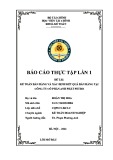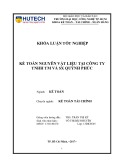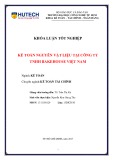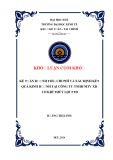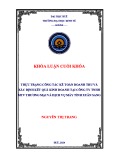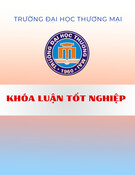
4
1.1.3. The benefit of E-commerce
• Market expansion: The market in e-commerce is a global market without
borders. Thanks to the internet connection, organizations can quickly access all
markets, large and small, across the globe.
• Cost reduction: One of the biggest advantages of ecommerce to businesses that
keep sellers interested in online selling is cost reduction. Many sellers have to
pay lots to maintain their physical store. In many cases, even after investing in
services, stock, maintenance and workforce, sellers don’t receive desired profits
and ROI.
• Affordable advertising and marketing: Sellers don’t have to spend a lot of
money to promote their items. The world of ecommerce has several affordable,
quick ways to market online. Ecommerce marketplaces are visual channels – and
sellers can really show off their product.
• Several payment modes: help consumers and businesses reduce significantly
transaction time and cost.
• Helping businesses understand information about the market and partners.
• Quickly and effectively reach the target customer market, thus meeting all
customer needs in the best way.
• Facilitating the establishment and strengthening of relationships between the
actors involved in the trade process.
1.1.4. E-commerce in Vietnam
Many enterprises have organized the deployment of e-commerce applications at various
scales and levels from equipping computers, connecting to the Internet in different
forms, exploiting basic applications of e-commerce such as electronic mail, using
software for production, business, ...
A part of Vietnamese consumers in big cities are quite familiar with buying a variety of
goods and services through e-commerce websites such as airline tickets, electronics,
mobile phones, computers, books, tours, hotel rooms...






